Two of the most vital skills that you can have as a prepper are to store clean drinking water and to repurpose old items to serve new, practical purposes. That’s precisely why repurposing storage items for stockpiling water is a great way to combine these two skills.
With that in mind, repurposing old milk jugs for water storage may seem like an ideal solution. After all, at the very least it would appear like it’s the next most obvious use for an old milk jug.
Here’s the problem though…storing water in your milk jugs may not be such a good idea after all.
Here are the primary reasons why you should think twice about storing water in your milk jugs:
The Materials Used in Milk Jugs Are Not Ideal for Water Storage
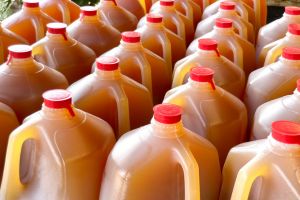 Most milk jugs are made out of HDPE, or high-density polyethylene. This is a very common plastic that besides being used for milk jugs and containers is used for packaging a variety of other beverages and foods as well. The reason why HDPE is so widely used is because it is resistant to chemicals and is also very sturdy…at least initially.
Most milk jugs are made out of HDPE, or high-density polyethylene. This is a very common plastic that besides being used for milk jugs and containers is used for packaging a variety of other beverages and foods as well. The reason why HDPE is so widely used is because it is resistant to chemicals and is also very sturdy…at least initially.
Over time, however, the plastics in HDPE are known to slowly degrade, and chemicals can leach off into the contents inside. This would eventually make the water you store in your old milk jugs unsafe to drink.
Related: How Long Can You Store Water Before It Becomes Unsafe to Drink?
This leads us into our next reason…
Old Milk Jugs Will Have Contamination Issues with Water
Milk jugs never were intended to be used to be reused in the first place. Again, the plastics used in HDPE are sturdy at first, but not over the long term.
But even if that weren’t the case, however, milk jugs still wouldn’t be the best choice for storing water. That’s because even after they have been cleaned thoroughly, chances are good that milk residue would still be left over in the containers. A combination of water and milk residue unfortunately creates an environment that is conducive to the growing of bacteria.
This means that the water you store in milk jugs would likely still become contaminated even if the degradation of HDPE plastics weren’t a problem.
Milk Jugs Have Poor Long-Term Durability
Milk jugs are designed to be stored in a grocery store, carried back to your home, and then kept in your refrigerator until the milk inside runs out, at which point they should be disposed of.
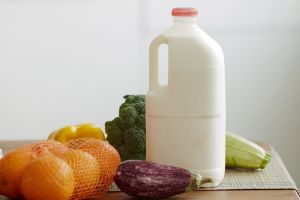
Related: Stop Throwing Away Spoiled Milk! Do This Instead
They were never meant for anything much more than that. They can’t withstand challenges like prolonged exposure to sunlight, drastic changes in the temperature, or repeated physical stress.
And as the HDPE plastic degrades over time, the jugs can slowly but gradually start to become brittle and develop cracks, which would inevitably lead to water loss.
Milk Jugs Are Not Even Certified for Water Storage
Milk jugs are not specifically certified or designed for water storage in the first place. While they are made from HDPE which is considered food-grade, milk jugs are intended for single-use packaging of dairy products and are not manufactured or even tested for long-term water storage.
Certification for water storage containers typically involves testing and compliance with specific standards to ensure safety, durability, and suitability for prolonged water storage.
Containers that are designed specifically for water storage, such as water barrels or purpose-built water storage containers, undergo far more rigorous testing and certification processes to meet industry standards.
These are the kinds of storage solutions that you should take a look at for your water. Speaking of which…
Alternatives for Storing Water
Like we mentioned above, the idea of repurposing old storage solutions for storing water is a great idea at face value. You just need to be smart about which specific storage solutions you choose to use.
Far more ideal solutions for storing water include:
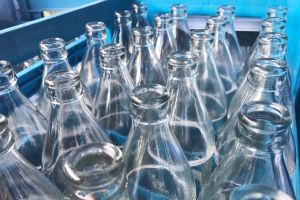
Glass Bottles
Glass bottles or jars, especially those with tight-sealing lids, can be used for storing water.
Glass is inert and does not leach chemicals into the water, which is a much safer option for long-term water storage than milk jugs.
Stainless Steel Containers
Stainless steel containers, such as water bottles or food-grade stainless steel drums, are durable and safe for storing water. They are resistant to corrosion and do not impart flavors or odors to the stored water.
Water Barrels
Purpose-built water barrels or drums designed for long-term water storage are an excellent option for storing larger quantities of water. These barrels often come with features such as UV protection, secure seals, and certification for water storage.
If you want to make sure the water you’re using for your and you family is safe to drink, it’s best to filter it yourself. You can learn here a cheap and easy way to create an ingenious rainwater harvesting and purification system capable of storing 165 gallons of water.
Water Storage Bags
Collapsible water storage bags made from food-grade materials are portable and convenient for storing water in emergency situations. These bags are often designed for outdoor use and can be easily transported when filled.
Rain Barrels
Rain barrels designed for collecting rainwater can also be used for storing treated or filtered water for non-potable purposes, such as gardening or cleaning.
Just make sure that the rain barrel is made from food-grade materials and is certified to be used for storing water.
In short, repurposing your milk jugs for storing water may seem like an efficient and perfect solution for water storage. But the truth is it’s only this way on the surface.
There are certainly many ways that you can reuse milk jugs, but reusing them for water storage is ideally not one of them.
You may also like:
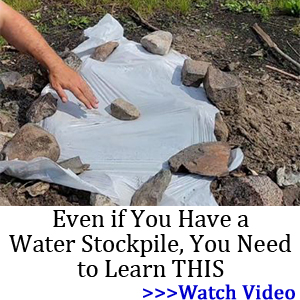 The Most Powerful Non-Lethal Weapon Against Invading Rioters
The Most Powerful Non-Lethal Weapon Against Invading Rioters
Major Water Restrictions in Effect!! Did You Know About This? (Video)
12 Native American Remedies That We Lost to History
Better Than Walmart: Stores to Get Survival Foods for a Bargain

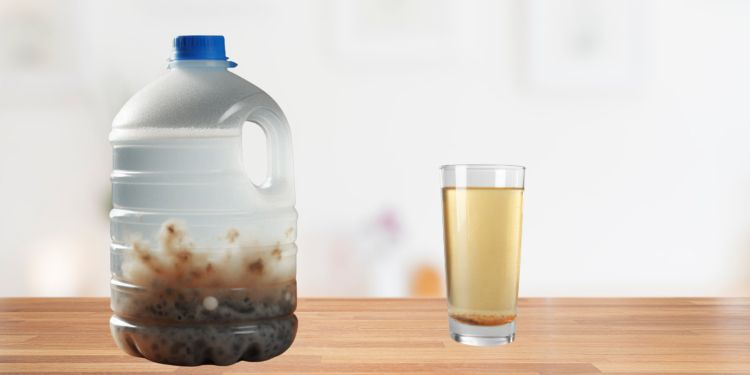




















I see lots of articles about storing water in milk jugs. But what about water jugs? Are they stronger than milk jugs?
I’ve starting dating mine and will replace them after 18 months. Is that enough? Will they last longer/shorter? I’m assuming it depends on the conditions with which they’re stored.
All good questions… watching because I do the same…
Interestingly, many municipal water lines are made from HDPE plastic. HDPE does NOT have BPA or phthalates in it. Possibly long term storage could have some unknown effect, but i’m unable to find any concrete evidence of that beyond a couple of vague, no fact references made on the net. My takeaway from the above article is that there are NO repurposed plastic containers that are considered safe. From personal experience, the milk contamination issue is a very real problem. Glass is great, but you’ve gotta store and handle those carefully. Not everybody has access to a good supply of large glass containers. Unless you have a really, really good water system, you need to treat that water before storing it.
My wife & I purchase distilled water every week for use in our coffee maker and CPAP machine so we have an ongoing supply of new water jugs. I refill them and store them in milk crates and I rotate the water supply every 6 months. I’m not worried about long-term storage or plastic breaking down.
Nicholas…while I appreciate the article I somewhat resent following a link for a solution to a problem; only to find out it’s a shameless plug to sell a book. Moving on, there’s no reason now, while we still have the resources… to build or purchase the tools needed to create a safe water supply. Excellent filters and purifiers are more affordable now than ever. Storage solutions likewise. Although somewhat expensive. I recently completed a battery powered RO purifier on a hand truck for mobility. It wheels to my fixed rainwater barrels and will produce 50 gallons per day of purified water down to 0.1 nanometers. UVC takes care of the final purification and a re-mineralizer adds the necessary minerals back in and raises the ph. Personally. I wouldn’t risk my health to homemade slow sand filters or any of the other bushcraft solutions out there. Why, when we have the resources now in the relatively “good times”.
Thanks for your thoughts. Your link is well past its “best by date” and the course is priced at $50 for 4 hours. For that kind of money, I can buy now 2 good gravity filter good for 5000 liters or several straw filters. The idea of prepping is to stock up now on what you think you might need in the future. Between my supply of good filters, adequate rain water supplies and a stash of chlorine dioxide, I’m set for as long as I’m allowed to stay on this planet in an upright condition. As always, you do what’s best for you and I will do the same.
To Farmer,
As said that was a link and said also to contact the school to see when the next class is available. Sure it costs money to learn about very little known information. How many people re post a prepper article on something that may not be true by people who never was a prepper?
This course is done by former military personnel and healthcare advisor people who have knowledge.
Just because you can buy another water filter does not mean you know what you are doing to really purify water for use in life.
I am only pointing out that people new to the prepping world may need additional information besides buying many water filters.
What happens when we can no longer purchase manufactured water filters in a SHTF? What then will you do?
Thank you.
Quick follow up. Safrax makes a stable, highly effective ClO2 … chlorine dioxide tablet that will kill any bad bugs in water. I’m not affiliated with them but have bought several bags if their 1 gram tablets for potential use on the road. ClO2 has many uses beyond water treatment. Look it up.
Storing water in milk cartons, plastic jugs is a temporary fix. We need food grade plastic jugs for intended long term water storage issues.
Or have the best water filters or spring water sources to have on hand as government seems to tax us on everything.
Off topic;
Sci-fi thoughts of future AI activities.
It is interesting how AI progressed into our culture by the Animal tracking system scientist precursor to the chip implant. Use the internet to the GPS grid system the gaming software to social media all combining into a software phenomenon that guides us in every day activities. The terminator Skynet a sci-fi example or War Games as this synthetic software becomes aware.
The danger is who is programming the software as in liberal or conservative thoughts to initiate a certain response to it’s environment.
The grocery stores are an example of AI manipulation in the pricing of food products. Ever notice how the prices go up during holidays and go back to lower prices?
AI makes that automatic that we don’t care anymore, the fees tacked on to our utility bills are being manipulated with most of our utilities fees constant fluctuation of pricing. That is just the tip of the iceberg not including the fake video an voice hijacking of our personal human details being used.
AI is not our friend to trust it’s motives in the future.
What has the government been doing to us with AI for years before the public as this information was exposed to us?
When I was a kid it was common for us poorer fisherman to set out baited lines in our favorite spots on a lake using the new technology of plastic milk jugs and rubber band lines. I guess they still make rubber band lines, we would attach a rubber band line to a weight made out of a concrete filled 5 pound coffee can, attach a fishing line with hooks, attach the other end of the fishing line to the milk jug so that the jug floated a couple feet below the surface. To help out we’d fill a burlap tote sack with dry dog food and sink it with weights to attract fish to the jugs. As the big money bass fisherman took over the lakes the milk jug lines became an annoyance to them and most lakes banned the practice. Great stealth fishing hack for SHTF.
We called them jug lines.
I have been using old Clorox bottles.
I have added a teaspoon of clorox to my 5 gal containers.
Is this alright???
Note to Ronald Peters:
Liquid Clorox has a very short shelf life. Usually around one
year. If you open a jug that is two years old the scent is
almost none existent.
Pool Shock lasts forever.The ratio for mixing with water to
get a gallon of Clorox can be found on the internet.
The 55 gallon barrels with a spigot or the 300 gallon totes
are a good way to go.The barrels usually started life storing
pickles or peppers so a solution of baking soda and Clorox
will clean them a cut down the odor.
In a grid down situation if you don’t live in the desert a
modified rain gutter to fill any receptacle wii be a real
life saver.
Quick caution note. Pool shock, 73% calcium hypochlorite is a fantastic oxidizer. Keep it anywhere near your tools and you can literally watch them rust. Over time, it will also destroy the plastic bucket and bag it comes in. I’ve tried a number of storage methods and found that glass jars with a silicone seal seem to work best. Still, keep it away from anything ferrous.
There is an issue with the rain gutter system, the type of roofing material and shingles are not food grade rated can add toxic chemicals to water.
So an additional purify process to the water stored before it’s considered potable water.
Even using the rain gutter system there is chemical residue that used on our vegetable garden crops needs purification before irrigating the veggies.
Also consider the bird, rat and mice poo accumulated on the shingles with leaf debris too. Good quality water filters are a must for the final use for drinking that water and plant use.
I have a number of 7-gallon water jugs. I replace the water in them annually at the start of hurricane season (i live in Florida). Just did it for this year, in fact. I fill from the tap using city water, but first I test the water myself. Its always been ok. Still, I generally add three drops of chlorine per gallon. I also buy a fresh bottle of unscented bleach just for the water jugs each year. I do have some pool shock available stored in glass jars with the “recipe” printed out.
Moreover, I also have several WaterBob bladders that can be put in our bathtub and filled. I have only felt the need to fill one up once, but I’m always ready to do it again. I also add some bleach to the WaterBob.
Additionally, I fill nine 2-liter soda bottles (cleaned out) with water and add one or two drops of bleach). As I am a Diet Pepsiholic I change out the bottles every year with “new” ones. Why nine bottles? They make for six refills of a 3-liter Camelbak bladder that can easily be done without taking the bladder out of the pack, or even refilled by a helper while the pack is still being worn. I guess I could fill more than nine bottles, but lets face it, storage space presents problems for preppers sometimes.
Chuck, I have tried finding the ratios of the various types of pool chlorines online to figure out the best methods, to no avail. It seems far too complicated, too many “sources” that don’t explain to us non-scientist types.
I had figured the 3 inch tabs would likely hold up best in storage, as my old above ground pool used them and they worked from one year to the next (lost that great storage option last year to a storm felled tree).
I can’t seem to find a calculation of what amounts to combine with water to make it safe……
(I have been reading your remarks here for several years now, and appreciate your contributions, btw)
Any kind of plastic or paper waxed item can store for short period of time
only thing to always remember is Plastic retains embedded toxons and releases them at a gradual rate
you can use any plastic as long as not for long duration of time and sanitized 1st
water grade has no toxins and has a chemical composition so as not to retain toxins
long term is for water grade
chemicals in water break down plasics and cause release
Glass or jars , large jugs made of clay , rock or earth based are best
Glass is the best and metal lets impuritys into the water
never drink anything that was used for clorox or bleach or chemical storage ( Toxic for life ) and it will always retain toxins
pottery , Rock , Glass Best
pottery , Rock , Glass Best
I like that.
A reply to yesterdays comment by Michelle ref Bitcoin:
As of today owners of Bitcoin can make some money if
dealing with other Bitcoin enthusiasts.
The reality is that you can’t buy a Big Mac or pay your
property tax bill or any make any financial transaction
In between.
The Securities and Exchange Commission are working
on serious restrictions on the ways Bitcoin is utilized.
That is the government isn’t it?!?!
When SHTF gets here a million or two Bitcoins will make
a dandy boat anchor.
Bitcoin is a fools game.If you want to survive don’t play.
I never use milk jugs for water storage with 2 exceptions. One is I WOULD use the water jugs I get that have my CPAP water in them for water storage after I use the initial water in them. And B I do use used milk jugs to store water to use to flush toilets should that become necessary. That water doesn’t need to be potable though I still try to clean them thoroughly and use bleach to try to sterilize them. But NEVER for water I might drink. It also probably wouldn’t hurt to use old milk jugs for water you would use to water plants. Water jugs can be used for a lot of things that don’t include drinking water. Fill one with water and put a lantern behind it and it will give you better light where needed. Use as a float when fishing. Plant starters. Plant mini greenhouses, nail/screw buckets and on and on.
the problem is NOT the material it is the residue.. the NATO standard 20L water jug is made of HDPE but they don’t come first with milk in them and cleaning out milk from any container is problematic at best
It is all a crap shoot at best, just do what we can as some people will be behind the 8-ball.
Has everyone forgotten about the best water purification method ever known? I’m talking about distillation. It’s very easy to do. You can find plenty of videos on YouTube showing people like us doing it, only they’re usually making alcohol instead of clean water. The principles and safety steps are the same no matter what you’re making.
First, collect water in your favorite way. You can even use muddy water from any river, creek or pond if that’s all you have. Run it through your field expedient filter system as needed.
Meanwhile, build or buy a still, piping and worm, and a cast iron griddle pan that fits the bottom of the boiler. As it’s for water, copper or stainless doesn’t matter much, (mine’s copper). I recommend a five gallon size for most people. Get one with a built-in thermometer in the cap to make things much easier and safer. Speaking of the cap, make sure the cap just sits on the boiler and doesn’t connect mechanically in any way: it acts as a safety valve and we don’t want any pressure buildup in the still. The other connections can be mechanical, in fact, this makes it much easier.
Time to make drinking water. You can heat up to the 5 gallon size boiler on your stove, or on an outdoor turkey fryer run by propane or even over a wood fire if need be. Sit the cast iron griddle directly on the heat source, then sit the boiler on top. Fill with your filtered water and heat it up to boiling. As the surface of the water begins to “smoke”, get your cap and catch jars ready. Use a couple of quart Mason jars plus any old container for catching the first quart out of the worm. Once the water comes to a boil, install the cap and worm, place the “throw away quart” container under the worm mouth and start watching the thermometer. When the thermometer reads boiling point, (you mountain folks will need to adjust to your altitude), if possible according to your heat source, adjust the heat to try to hold as close to this temperature as possible. Now give it one more minute at that temperature, toss out any water already collected and start catching your purified water. Astute readers will note that I only mentioned two clean jars for collection. This is because as each fills, you swap it for the other and pour the water into your clean water storage container. I use and recommend glass tuns. I also only make and store ten to fifteen gallons at any one time, usually over a weekend. All our drinking and cooking water is distilled and we usually need no more than two gallons a day. Ten to fifteen gallons gives us a good couple weeks of water. Your milage may vary.
Now this is the extremely abbreviated version of how to operate a still for water purification purposes. You can look up the fine details of sealing the cap and cooling the worm on many different websites and get advice from any of several FB groups dealing with the subject of distillation. There’s also plenty of books available as well. When asked, I recommend “Moonshine” by Matthew Rowley, but it appears that it is no longer available, at least on Amazon. Speaking of which, you can buy your still on Amazon if you prefer, but it’s usually cheaper to go directly to the manufacturer’s website and order direct. That said, any decent book on home or DIY distillation should give you more than you need to know to get started safely.
Wouldn’t modern purification systems work to purify any remaining chemicals from milk jugs? If these products can clean muddy water and make it safe for drinking, couldn’t they work for milk jusgs?
Also, if you’re not using milk jug water for drinking, using it for toilet flush for instance, why not store water in milk jugs?